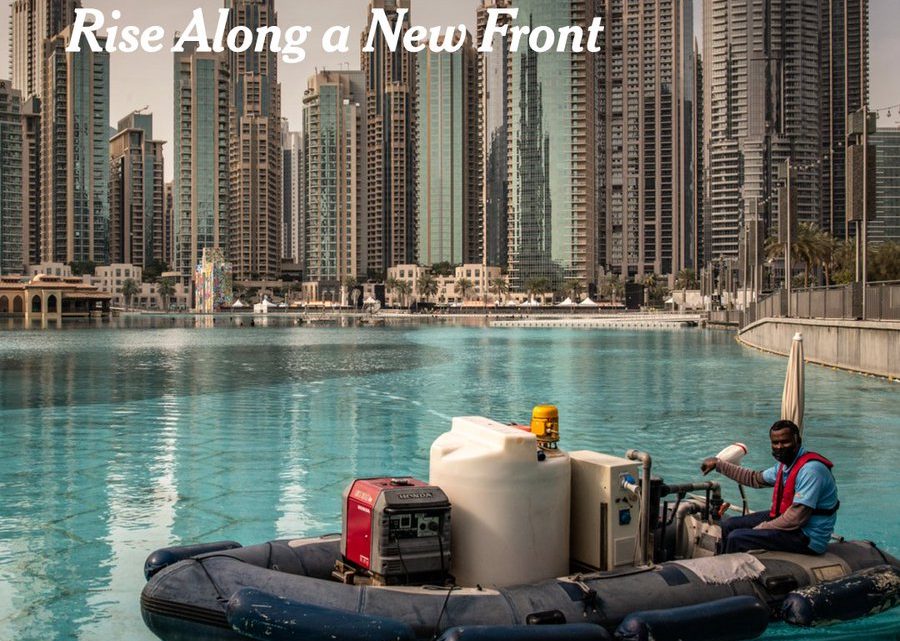New York Times last updated: Aug 31,2022
As climate change makes the region hotter and drier, the U.A.E. is leading the effort to squeeze more rain out of the clouds, and other countries are rushing to keep up.
ABU DHABI, United Arab Emirates — Iranian officials have worried for years that other nations have been depriving them of one of their vital water sources. But it was not an upstream dam that they were worrying about, or an aquifer being bled dry.
In 2018, amid a searing drought and rising temperatures, some senior officials concluded that someone was stealing their water from the clouds.
“Both Israel and another country are working to make Iranian clouds not rain,” Brig. Gen. Gholam Reza Jalali, a senior official in the country’s powerful Revolutionary Guards Corps, said in a 2018 speech.
The unnamed country was the United Arab Emirates, which had begun an ambitious cloud-seeding program, injecting chemicals into clouds to try to force precipitation. Iran’s suspicions are not surprising, given its tense relations with most Persian Gulf nations, but the real purpose of these efforts is not to steal water, but simply to make it rain on parched lands.
As the Middle East and North Africa dry up, countries in the region have embarked on a race to develop the chemicals and techniques that they hope will enable them to squeeze rain drops out of clouds that would otherwise float fruitlessly overhead.
With 12 of the 19 regional countries averaging less than 10 inches of rainfall a year, a decline of 20 percent over the past 30 years, their governments are desperate for any increment of fresh water, and cloud seeding is seen by many as a quick way to tackle the problem.
And as wealthy countries like the emirates pump hundreds of millions of dollars into the effort, other nations are joining the race, trying to ensure that they do not miss out on their fair share of rainfall before others drain the heavens dry — despite serious questions about whether the technique generates enough rainfall to be worth the effort and expense.
Morocco and Ethiopia have cloud-seeding programs, as does Iran. Saudi Arabia just started a large-scale program, and a half-dozen other Middle Eastern and North African countries are considering it.
China has the most ambitious program worldwide, with the aim of either stimulating rain or halting hail across half the country. It is trying to force clouds to rain over the Yangtze River, which is running dry in some spots.
While cloud seeding has been around for 75 years, experts say the science has yet to be proven. And they are especially dismissive of worries about one country draining clouds dry at the expense of others downwind.
The life span of a cloud, in particular the type of cumulus clouds most likely to produce rain, is rarely more than a couple of hours, atmospheric scientists say. Occasionally, clouds can last longer, but rarely long enough to reach another country, even in the Persian Gulf, where seven countries are jammed close together.
But several Middle Eastern countries have brushed aside the experts’ doubts and are pushing ahead with plans to wring any moisture they can from otherwise stingy clouds.
Today, the unquestioned regional leader is the United Arab Emirates. As early as the 1990s, the country’s ruling family recognized that maintaining a plentiful supply of water would be as important as the nation’s huge oil and gas reserves in sustaining its status as the financial and business capital of the Persian Gulf.
While there had been enough water to sustain the tiny country’s population in 1960, when there were fewer than 100,000 people, by 2020 the population had ballooned to nearly 10 million. And the demand for water soared, as well. United Arab Emirates residents now use roughly 147 gallons per person a day, compared with the world average of 47 gallons, according to a 2021 research paper funded by the emirates.
Currently, that demand is being met by desalination plants. Each facility, however, costs $1 billion or more to build and requires prodigious amounts of energy to run, especially when compared with cloud seeding, said Abdulla Al Mandous, the director of the National Center of Meteorology and Seismology in the emirates and the leader of its cloud-seeding program.
After 20 years of research and experimentation, the center runs its cloud-seeding program with near military protocols. Nine pilots rotate on standby, ready to bolt into the sky as soon as meteorologists focusing on the country’s mountainous regions spot a promising weather formation — ideally, the types of clouds that can build to heights of as much as 40,000 feet.
CONTINUE https://www.nytimes.com/2022/08/28/world/middleeast/cloud-seeding-mideast-water-emirates.html
The article has been reproduced or quoted several times – for example here https://dailyexpress.lk/hot-topics/environment-hot-topics/16895/
IMPORTANTE!: Il materiale presente in questo sito (ove non ci siano avvisi particolari) può essere copiato e redistribuito, purché venga citata la fonte. NoGeoingegneria non si assume alcuna responsabilità per gli articoli e il materiale ripubblicato.Questo blog non rappresenta una testata giornalistica in quanto viene aggiornato senza alcuna periodicità. Non può pertanto considerarsi un prodotto editoriale ai sensi della legge n. 62 del 7.03.2001.












